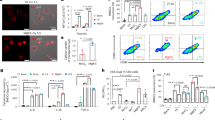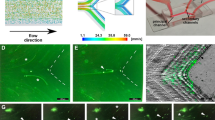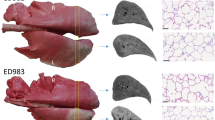Abstract
The sites of tumour development for 6 rat tumours injected into syngeneic rats via different vascular routes was determined. Xenografts of human tumours were also injected intra-arterially (i.a.) into immunosuppressed rats. Following intravenous (i.v.) and intraportal (i.ptl.) injection of cells tumour colonies localized in lung and liver respectively due to tumour cell arrest. Arterially injected radiolabelled cells disseminated and arrested in a similar distribution to cardiac output and did not 'home' to any organs. Following arterial injection of unlabelled tumour cells colonies grew in many organs. While the pattern of growth for a particular tumour varied with the cell dose, the 'arterial patterns' for all of the tumours studied followed a similar pattern. Some organs (eg adrenals, ovaries and periodontal ligament) were consistently preferred, others (eg skin and skeletal muscle) only supported tumour growth following the delivery of large numbers of cells, while in some tissues (eg spleen and intestines) tumour never grew. Viable tumour cells could be demonstrated by bioassay in many organs for up to 24h after i.a. injection. However tumour growth only occurred in certain organs and the pattern of this growth was not related to the number of tumour cells arrested or their rate of autolysis. This site preference could be expressed quantitatively as the probability of an arrested cell developing into a tumour and was considered a 'soil effect'. Site preference was not directly related to organ vascularity. Organ colonisation was promoted by steroid treatment but the mechanism was unclear and was not secondary to T-cell immunosuppression or prostaglandin synthesis suppression. The adrenal glands were preferred sites of tumour growth but pharmacological manipulation of adrenal function did not alter tumour growth to this organ. Sites of injury and healing were preferred sites of tumour colonisation and this could not be accounted for by increased delivery of tumour cells to these regions. The possibility that the macrophage component of the inflammatory response promoted tumour growth was suggested from studies in which the interval between trauma and inoculation of tumour cells was varied as well as by promotion of intraperitoneal (i.p.) tumour growth by a macrophage infiltrate.
This is a preview of subscription content, access via your institution
Access options
Subscribe to this journal
Receive 24 print issues and online access
$259.00 per year
only $10.79 per issue
Buy this article
- Purchase on Springer Link
- Instant access to full article PDF
Prices may be subject to local taxes which are calculated during checkout
Similar content being viewed by others
Author information
Authors and Affiliations
Rights and permissions
About this article
Cite this article
Murphy, P., Alexander, P., Senior, P. et al. Mechanisms of organ selective tumour growth by bloodborne cancer cells. Br J Cancer 57, 19–31 (1988). https://doi.org/10.1038/bjc.1988.3
Issue Date:
DOI: https://doi.org/10.1038/bjc.1988.3
This article is cited by
-
Incomplete bowel obstruction caused by sigmoid colon cancer in an inguinal hernia: a case report
Surgical Case Reports (2024)
-
The Role of Hepatic Ischemia–Reperfusion Injury and Liver Parenchymal Quality on Cancer Recurrence
Digestive Diseases and Sciences (2014)
-
Lung Cancer with Gastrointestinal Metastasis - Review of Theories of Metastasis with Three Rare Case Descriptions
Cancer Microenvironment (2013)
-
Optical imaging: bacteria, viruses, and mammalian cells encoding light-emitting proteins reveal the locations of primary tumors and metastases in animals
Analytical and Bioanalytical Chemistry (2003)



